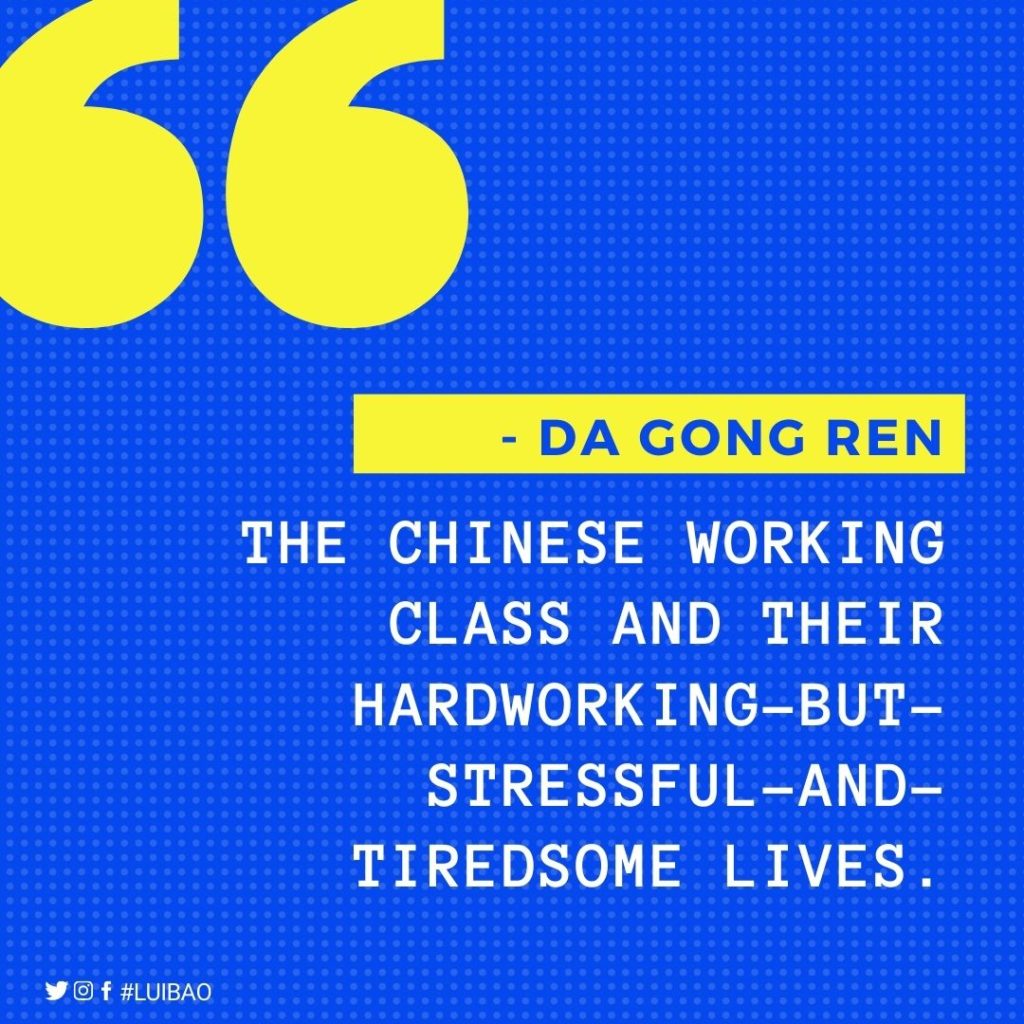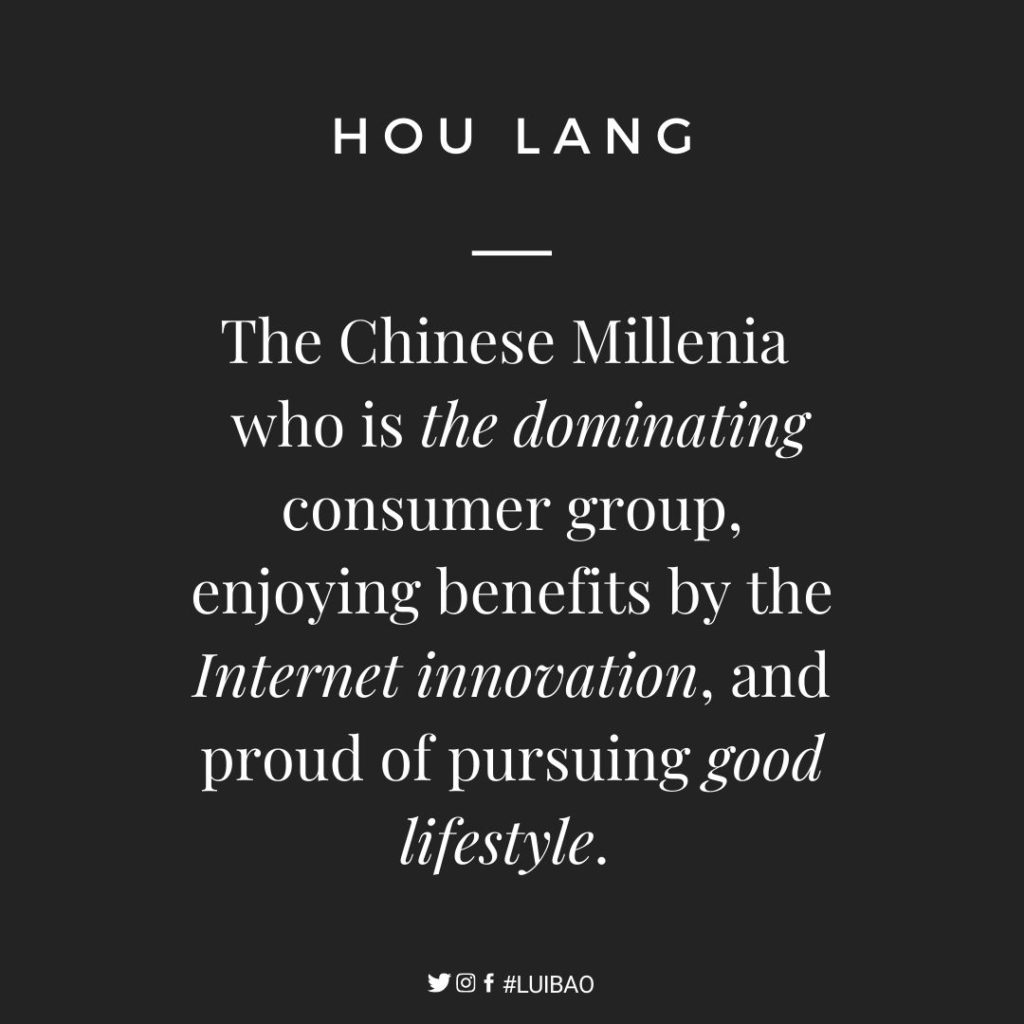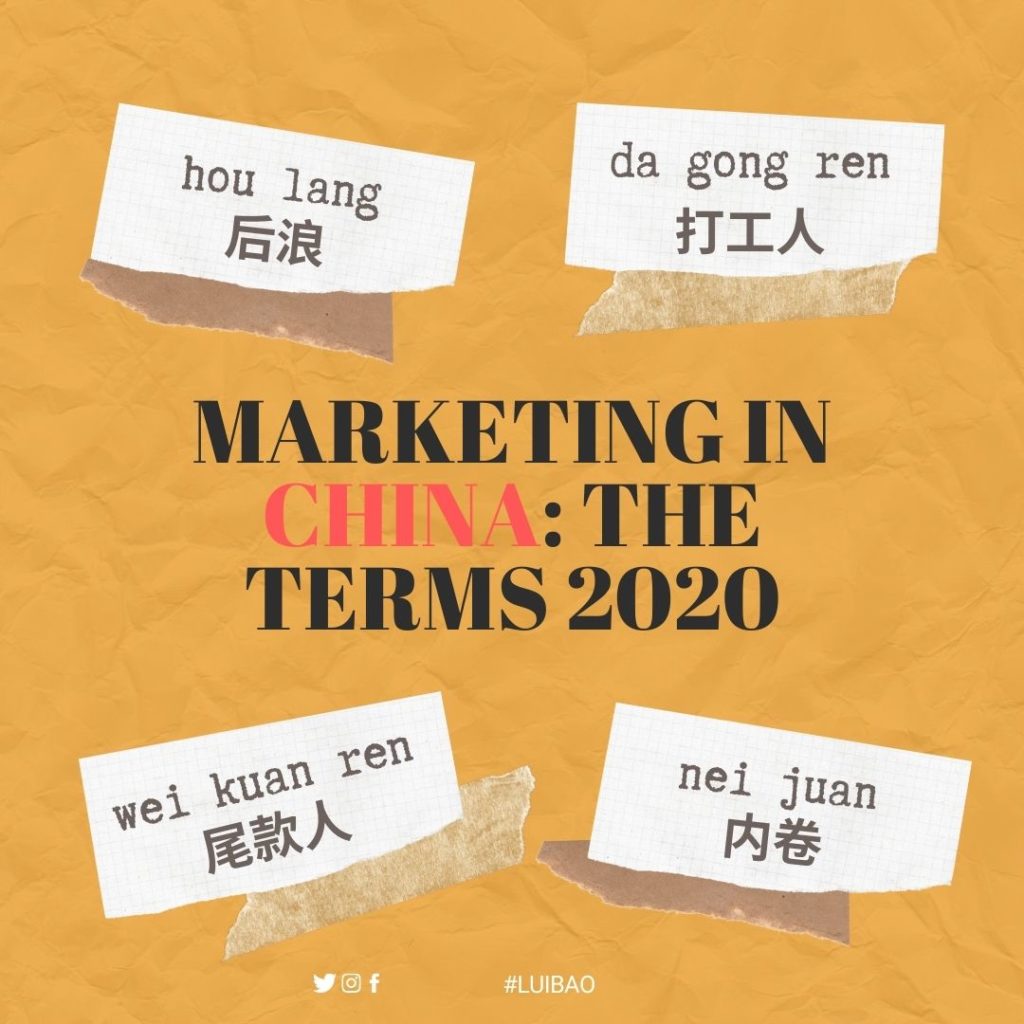Marketing in China? Many clients turn to us with this universal question. China, with its 1.4Bn population and impressive market size, makes marketing in China extremely difficult, and sometimes very confusing. We think one of the biggest reasons is the language and culture gap. Here, the “language” doesn’t mean to understand what a Chinese talks about. It means what a Chinese means. Therefore, we did our research and made this list of the most used Chinese (Internet) slang words in 2020.
da gong ren
It is a noun for the working class. It doesn’t limit the types of your job, as long as you are working for somebody else.
In China, the medium-to-low working-class uses this word to “label” themselves in the society. The word also highlights their hardworking-but-stressful-and-tiresome lives.
What we see behind this slang word is the need from the large young working class in China. They desire for work-and-life balance. Efficient, convenient, and value-for-money is the key criteria in many decision-making cases.
This group is the bed for many high-tech inventions in the lifestyle sector in China. For example, food delivery, ready-to-cook meals, and high-tech kitchenwares like air fryer.

hou lang
Let’s say, it means “the next wave“. This word is wildly used by the post-90 generation, or we shall call them the Chinese Millenia?
They are the first wave to enjoy all the benefits from Internet innovation in China. As the youth and probably the dominating consumer group in China, they are proud of pursuing a good lifestyle in China. We have discussed with different angles and case studies in China’s food industry.
Nowadays when we talk about marketing in China, Millenia is probably the most dominating target group. They are somewhere between the traditional and the new. The brands are working on a good balance between quality and out-of-box design to engage this powerful consumers. Comparing to China’s Z generation, the Millenia might be less impulsive but expect the quality, authenticity, and credibility from a brand.

wei kuan ren
It is a new word from last year. It means a person who needs to complete the order by settling the payment in full.
This word appeared during Alibaba’s 11.11. mega shopping festival (Single Day’s shopping festival). Last year, the shopping game involved a two-phase ordering window. The consumers paid a small deposit to secure a product with an extremely attractive promotion deal. On 11.11, they completed the order by paying the rest.
Many “crazy” Chinese consumers ordered too much than they should (and could) because of the small deposit required during the first phase. When they needed to settle the huge amount in Phase 2, they became the “pitty-but-happy” wei kuan ren.
Similar to Black Friday, we see it as a consumer habit and a nationwide exciting event every year in China.
The creator of this shopping festival, Alibaba (Tmall) enjoyed sales of USD$75Bn in one day. More impressive numbers were generated by other E-commerce, social media, and traditional businesses that day. Social commerce and Zhibo (live streaming) continued to show their advantage to boost sales.
For brands, it was a day (or a period) without “sleeping”.
For China marketers, this is a yearly event to discover new strategies, new technology, and new trends in China.

nei juan
When a society or a community reaches its bottleneck but cannot breakthrough, the existing resources and participants tend to form up a non-healthy competition. It results in a negative effect on most parties involved. This is “nei juan” in Chinese.
Back to our marketing-in-China topic, in many cases, this is about the ceiling an established brand or company (even an industry) will face to. The breakthrough is normally a new market segment (they call it “quan ceng” in Chinese) by new product innovation or new brand image.
The possible solution?
We think about the trendy marketing “game” in the past years in China – brand collaboration. We see a lot of successful cross-brand marketing cases in the fashion, beauty, food, and technology industries in China.
The basic trick of brand collaboration is to achieve the segment break-through so that they can reach another group of the customer group. It works not only for energetic brands like M.A.C. but also traditional ones like White Rabbit. We have covered both cases in our previous post about the E-market trends in China.
To summerize, we have added our interpretation from the words themselves, and their application in the China’s business world. Of course, the popular Chinese (Internet) slang words are not limited to these four. However, we value them as the most meaningful ones for you to consider your China strategies. Hope you can get some inspiration from this post.
Reference: